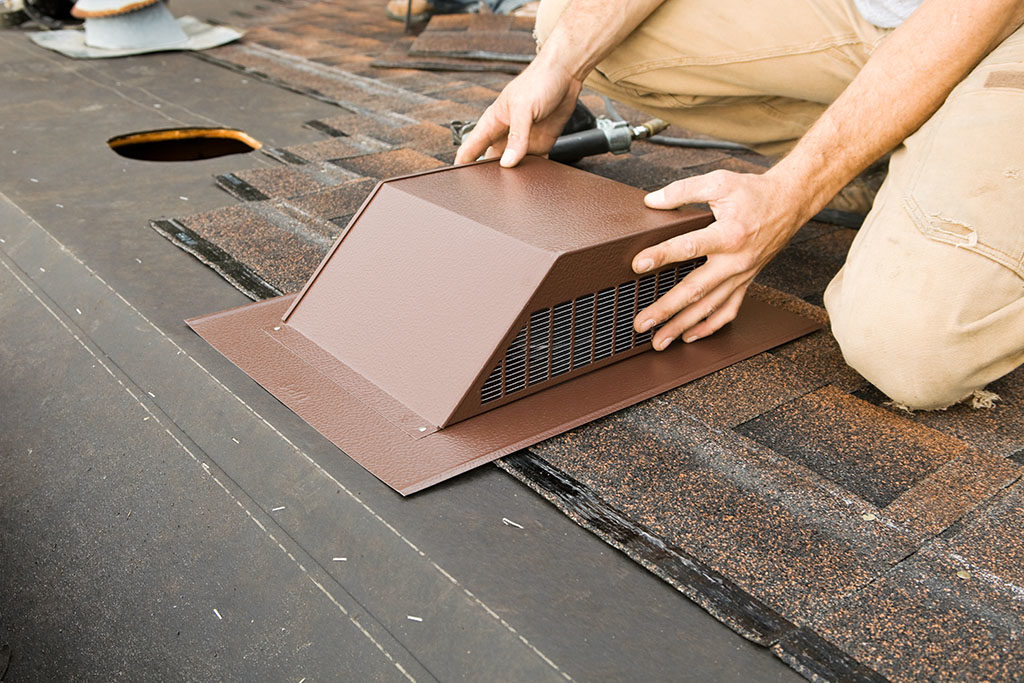With summer around the corner, most homeowners are already wincing at the though of how much electricity they might have to consume cooling their home. The increase in sun’s intensity pushes the temperatures up forcing the HVAC system to work harder in order to keep the temperatures within an acceptable range.

While most people will concentrate on better windows, a more efficient cooling system or a heat pump to cool home, very few think of how bad their attic is at keeping the house cool during the summer.
It is easy to ignore the attic especially if no one uses it regularly. The problem is that the better part of the heat comes into your house through the attic. The suns heats up the roof radiating energy into your attic and into the house. Dissipating this heat long before it gets into your home is a perfect way to reduce your summer air conditioning bills.
Very few attics can boast of basic amenities like sufficient windows and proper attic ventilation. This coupled with other features we are going to address here makes it very easy to use the attic to cool your house by keeping the heat away in the first place.
Think Attic Ventilation
Attic ventilation encourages air circulation hence cooling down the attic before it transfers that heat into your house. Since the attic will be too hot and perhaps not in active use, it would be counterproductive to introduce some AC vents there. After all, we are trying to cut down on costs not actively spend money to keep it cool.
Signs that You Need Improve Your Attic Ventilation
Most modern day homes are built with energy efficiency in mind. Consequently, constructors will install vents as a standard procedure. A quick inspection of your home is all you need to tell if you have the right attic ventilation
- Walk around the house inspecting your eaves and roof. If you don’t see any vents on the roof or the eaves, you have to add your own to improve ventilation
- Touch the ceiling on a warm day to find out how hot it is. A very hot ceiling tells you the attic is acting as a small solar oven and you have to improve it’s ventilation to keep the temperatures low
- Any ice forming on your eves during winter tells you that your attic is too warming meaning that it is poorly ventilated as it’s temperatures are very different from roof temperature hence it is melting the snow
- The rafters and roof sheathing will be moist in winter if air is escaping from your house into the attic. This means that you will need to revisit the insulation between the living space and the attic for better isolation
Natural Ventilation
Your first option would be natural ventilation. Introducing a couple of vents in the attic will encourage natural air floor. Once you have the vents in place, nature will take care of the rest. Hot air rises up. It will find its way up and out the house all creating a natural air current that draws in colder air from low placed vents and the rest of the house while expelling hot air from the top vents.
If your attic already has such vents, resist the urge to cover them up during the winter. Most homeowners think that covering the attic ventalation will keep the house warm and safer. While this might be true, a very warm attic in winter will encourage ice damming which could be dangerous to your roof.
Seal the Attic
If has unlimited access to your house, your ventilation will suck in cold air from the house up to the attic. While this might keep the attic cool, you will be wasting conditioned air on the attic and will still rise your HVAC bill.
Sealing the attic and minimizing air interaction between the attic and the house is a perfect way to minimize this. If you have low placed attic windows, prop them up to give alternative air intakes. Installing a few vents near the floor of the attic will create intake vents that will encourage the attic to set up its own natural air circulation without interfering with the microclimate your air conditioner works so hard to create in the rooms below.
Get a Reflective Roof
Attic ventilation might just do so much in helping keep your home cool during the summer. The other practical way to keep off most of the heat is keeping your roof as reflective as possible. Adding a sheet of reflective material below the roof and properly insulating your attic will increase its resistance to external heat.
If possible, invest on a highly reflective roof that bounces back most of the sun’s rays. Keeping your roof cool is the first step to keeping your attic cooler. If the attic doesn’t heat up, there won’t be the need to spend a fortune trying to cool it down in the first place.
Good ventilation will keep the attic cool. A cool attic will not slowly roast your living space forcing you to push your AC harder to keep a cool home. Improving air circulation is a perfect yet ignored way to bring your summer cooling costs low without investing in too much.